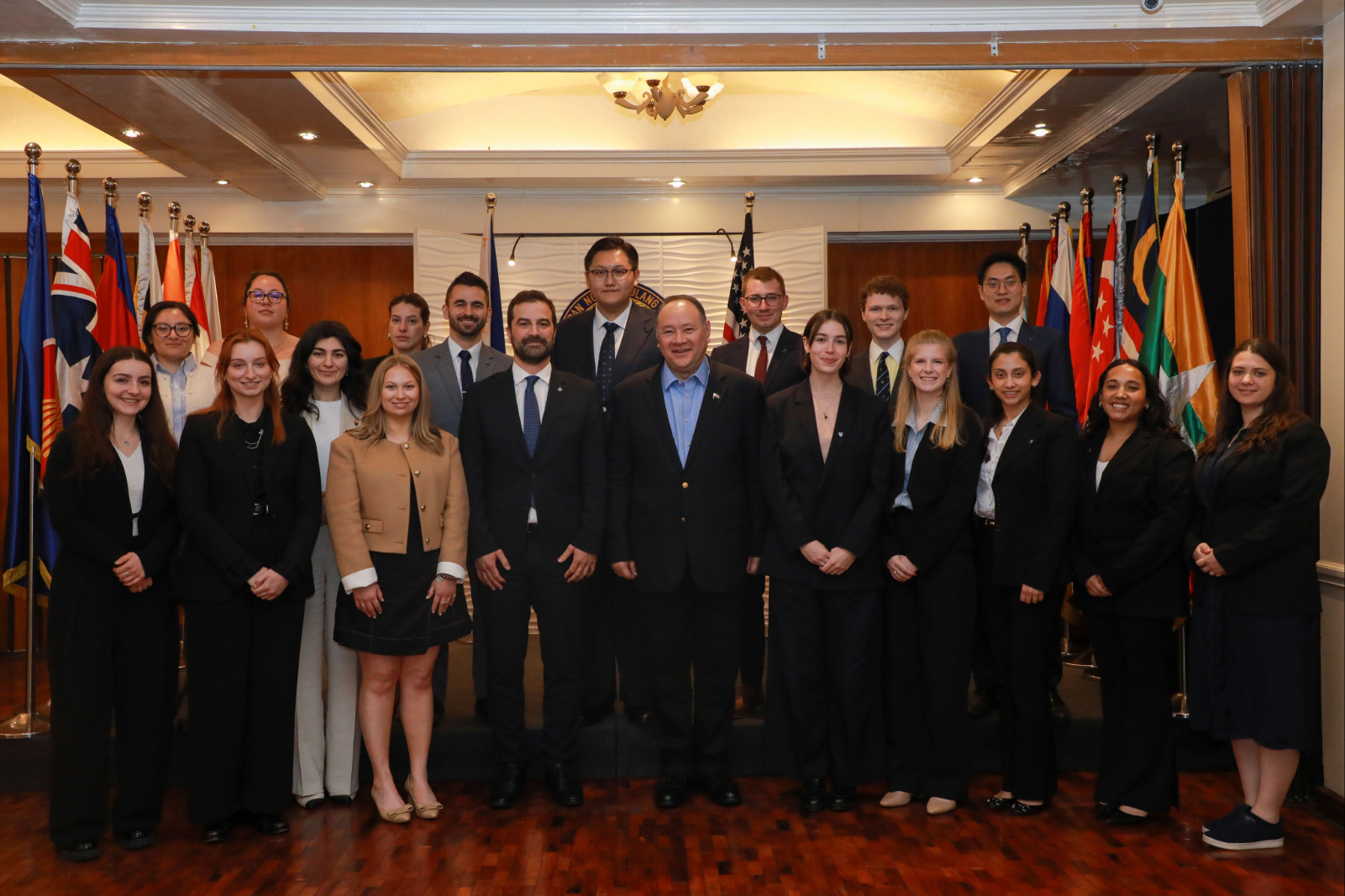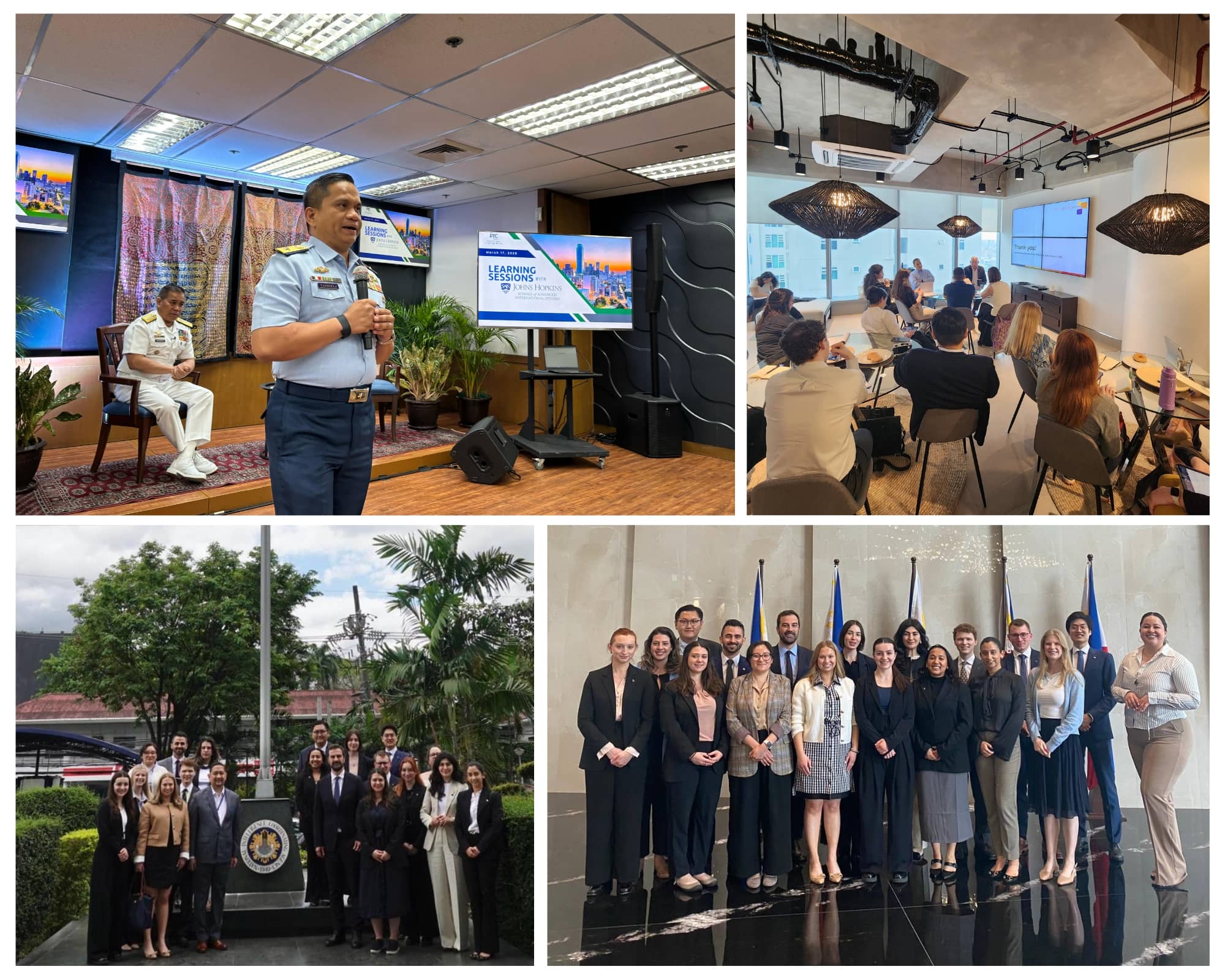Navigating Gray Zones

A Study Trip to the Philippines Explores Sovereignty Issues
For students of international relations, few experiences rival the intensity of stepping into a geopolitical hotspot and hearing directly from the policymakers, military leaders, and civil society actors navigating the challenges on the frontline. The Johns Hopkins SAIS Conflict Management program’s March 2025 study trip to the Philippines was a testament to the power of this experiential learning model, offering 16 students an immersive look into the strategic intricacies of the South China Sea/West Philippine Sea dispute.
Led by Siniša Vuković, senior lecturer in Conflict Management and director of the Master of Arts in Global Policy Program, the trip was designed to investigate a critical issue in modern conflict: how states respond to gray zone activities. The Philippines provides a compelling case study of a nation confronting persistent, coercive actions from an assertive neighbor aiming to redefine regional norms and power balances.
The primary objective was to analyze the tactics and strategies that Manila employs to manage escalation, safeguard its sovereignty, and navigate the profound power imbalances at play. This firsthand research allowed students to explore the real-world impact of these dynamics on existing alliances and the formation of new partnerships with like-minded states.
“The highlight of the Conflict Management trip to Manila was visiting Camp Aguinaldo, the Philippines’ equivalent of the Pentagon, for a sit-down with Secretary of Defense Gilbert Teodoro,” said Sophia Datta, who is studying for a Master of Arts in International Relations. “Engaging directly with him and hearing his perspective on regional security challenges in the West Philippine Sea was an invaluable opportunity that brought the classroom material to life. This experience has been one of the highlights of my time at SAIS, and the paper I wrote for the course was far stronger and more accurate because of the insights gained during the trip.”
Through a series of high-level engagements, students gained a sophisticated understanding of an integrated strategy. Discussions with senior defense, security, and foreign affairs officials revealed how the very nature of deterrence is changing. Students learned that in the gray zone, deterrence is not merely a military calculation but a dynamic interplay of diplomatic signaling, robust alliance management, and legal assertiveness. They saw firsthand how the Philippines leverages international law to counter territorial claims and solidify its sovereign rights.
This immersive experience illuminated the non-military dimensions of modern statecraft that are critical for aspiring practitioners to grasp. Briefings on maritime operations were contextualized with deep dives into the roles of misinformation, disinformation, and cyber threats in shaping the strategic environment. Students came to understand how these tools are used to create polarized identities and undermine national cohesion, and they explored the shadowy nexus between state-sponsored pressure campaigns and the illicit activities of criminal networks.
The study trip was a unique opportunity to see how a state crafts a whole-of-society response, integrating military, legal, and information strategies to counter a multi-faceted challenge. It provided a powerful lesson that modern conflict cannot be understood in silos. It also equipped the students with a nuanced, integrated perspective that will define their future professional careers, preparing them to analyze and respond to the complex interplay of law, security, and information that characterizes contemporary global challenges.
For the next generation of leaders in diplomacy, defense, and international policy, these insights are invaluable. The research and analysis conducted by the students culminated in a panel presentation in April 2025, where they shared their findings and policy recommendations.

Enjoyed reading, Navigating Gray Zones? Learn more about what Washington DC campus has to offer.
Back to Beyond the Classroom Stories